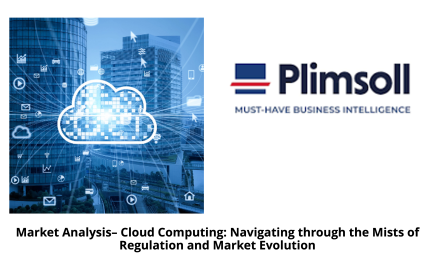Faced with the pandemic, firms did things that once seemed impossible — sometimes overnight. Under the relentless pressure of new customer realities, the future came into focus: The value of your company depends on how customer-obsessed, resilient, creative, and adaptive you are in jumping to the next growth curve in your industry.
Much of your success will depend on how quickly and how well you harness technology to both enable your workforce in the new normal and build platforms that differentiate your firm. Indeed, technology acceleration is the common thread in our predictions for the coming year. Yes, that means investing in new technology. But with the pandemic still a reality and budgets rightfully under scrutiny for 2021, it also means taking advantage of and realizing the value of the technology that you already have — and finally retiring the technical debt holding you back.
2021 will be the year that every company — not just the 15% of firms that were already digitally savvy — doubles down on technology-fueled experiences, operations, products, and ecosystems. Read on to see what exactly 2021 has in store for business and technology leaders.
- Consumers compelled towards escapism – in 2021 we will begin to see contours of the new economic, social, and cultural orders forged in the crucible of the COVID-19 pandemic. – Social distancing tempts another 10% to 12% of US consumers to try extended reality.
- CMOs reinvent themselves and their teams – The circumstances of 2020 brought to a head the quagmire that has been brewing for marketing leaders over the last five years: Chief marketing officers need to drive customer obsession at their firms, rather than just guiding ad buying and promotions. That means putting the customer at the center of everything you do: leadership, strategy, and operations. – Spend on loyalty and retention marketing will increase by 30% as CMOs assert control over the full customer lifecycle.
- CX leaders renovate, not just decorate – In years past, we saw the most improved companies in Forrester’s Customer Experience Index (CX Index™) advance by playing a game of whack-a-mole as they found and fixed fundamental problems, often in their back-end systems and processes. In 2020, we saw many more companies advance and improve by playing a very different game, one that’s just starting to bear fruit after years of improving core CX competencies, especially research, prioritization, and enablement. Forrester is seeing increasingly widespread adoption of CX competencies, which we predict will enable 25% of brands to achieve statistically significant advances in CX quality in 2021.
- CIOs lead the bold disruptors – In 2021, 30% of firms will continue to accelerate their spend on cloud, security and risk, networks, and mobility — including struggling firms looking to leapfrog less wily competitors and gain advantage coming out of the pandemic.
- COVID-19 changes leadership and hiring practices forever – In 2021, at least 21% of US information workers will work primarily from home, compared with 7% in 2019. Some 47% of North American managers surveyed during the pandemic anticipate a permanently higher rate of full-time remote employees, and 53% of employees say they want to work from home more often even after the pandemic. – Remote work will rise to 300% of pre-COVID-19 levels
- With more employee data comes opportunity – but also legal risk. – Regulatory and legal activity related to employee privacy infringements will double.
- Remote work drives uptick in insider threats – 2020 was not the year security and risk leaders wanted or expected. 2021 will not see things return to normal – yet. This will simultaneously require chief information security officers (CISOs) and security and risk leaders to adapt while remaining resilient.- 33% of data breaches will be caused by insider incidents, up from 25% today.
- Workplace automation and AI are here to stay – 35% of companies will double down on workplace AI.
- Digital pathways bring B2B marketers closer to buyers – The coronavirus pandemic has accelerated the digital destinies of B2B buyers and marketers. B2B marketers — with a keen eye on customer satisfaction and revenue acceleration – must quickly adopt new technologies as buyer engagement preferences shift toward digital channels. Today, more than one-third of B2B technology buyers say digital engagement channels (such as vendor websites) have become more important in their buying journeys, while around four in 10 indicate that human/analog engagement with sellers has become less important. – More than a third of B2B technology buyers will rate chatbots as a top-10 engagement channel.
- B2B sellers deepen buyer relationships with help from AI – As companies extend their work from-home policies, airlines reduce routes, and health concerns prevail, expect B2B sellers to continue adapting their methods and building new competencies to succeed in a largely remote and digital environment. To thrive in 2021 and beyond, B2B sellers will need the right enablement tools to enhance their productivity and engage with prospects and customers in more meaningful ways. – More than 60% of B2B sellers will be enabled by AI and automation.
- Cl0ud takes center stage in pandemic recovery – The workplace impact of the global pandemic reinforced the tremendous value and necessity of cloud computing to the world’s economy and workforce. Without cloud apps, tools, and services, businesses could not have sent millions of workers home, maintained global supply chains, or shifted entire industry business models in a matter of weeks. – The global public cloud infrastructure market will grow 35% to $120 billion in 2021.
- The Edge is the new cloud – Edge computing is essentially bringing computing closer to where data is generated and where action on the data can be taken. In 2020, mobility decision-makers whose firms have implemented edge computing told Forrester that collecting input from mobile and other devices was the biggest benefit to their organizations using edge computing. In 2021, we will see new business models emerge that facilitate the deployment of edge, efforts by cloud platforms to compete, and AI and 5G facilitating the expansion of edge use cases. All of this new business and investment will see edge eat into public cloud growth. – New edge vendors will shave 5 points off of public cloud growth.
Out of the crisis, a new order takes hold – Following sudden and profound disruption in 2020, a new landscape is emerging. Hard-won lessons in adaptability, creativity, and resilience will continue to serve companies as they navigate ongoing change. No industry or firm will be untouched as ways of working, leading, and serving customers are transformed. Explore these dynamics further with Forrester thought leaders in our Predictions 2021 webinar.
 To read the full report click on this link
To read the full report click on this link
BIIA thanks our member Forrester Research for this report


























